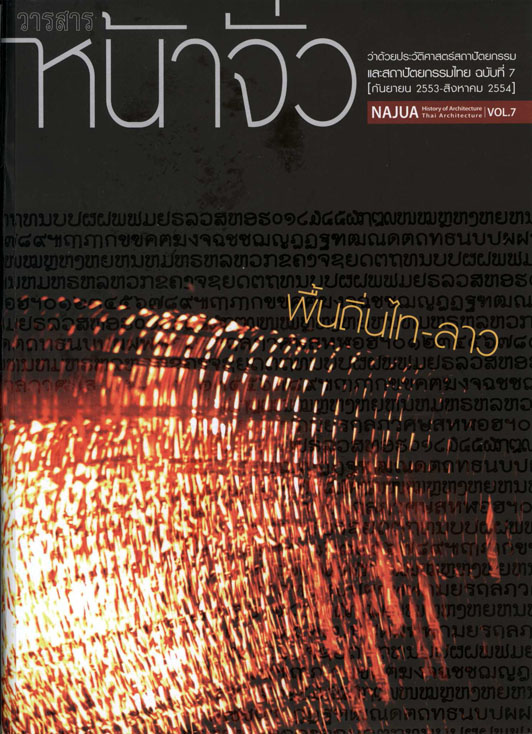ต้นกำเนิด “มณฑล” ของกรุงเทพฯ ต้นกำเนิด “มณฑล” ของกรุงเทพฯ
Main Article Content
Abstract
บทคัดย่อ
บทความนี้เสนอว่ามณฑล (mandala) ซึ่งเป็นแผนภูมิจักรวาลของพราหมณ์-พุทธที่แสดงในรูปแบบเรขาคณิต ที่เกี่ยวพันอย่างใกล้ชิดกับคัมภีร์อภิปรัชญาคลาสสิคของไทย คือ ไตรภูมิกถา เป็นต้นร่างทางสถาปัตยกรรมในการวางแผนและก่อสร้างกรุงเทพฯ และเสนอว่าแนวคิดมณฑล (mandala motif) ถูกประยุกต์ใช้แต่แรกในการขยายกรุงธนบุรีมายังฝั่งตะวันออกของแม่น้ำเจ้าพระยาในรัชสมัยพระเจ้าตาก จากนั้นก็ได้รับการจัดวางศูนย์กลางใหม่ในการขยายเมืองต่อไปทางด้านตะวันออกในช่วงต้นรัชกาลที่ 1 และขณะที่รัชสมัยนั้นดำเนินต่อไปขอบเขตของเมืองได้รับการปรับปรุงโดยไม่รวมเมืองชั้นในเดิมฝั่งตะวันออก และกำหนดเขตเน้นบริเวณที่เป็นศูนย์กลางภายในเมืองที่มีกำแพงล้อมรอบ เมื่อพิจารณาในแง่หลักการทางสุนทรียะของมณฑลแล้ว ลักษณะเมืองยุคก่อนสมัยใหม่ของกรุงเทพฯ ไม่ได้ถูกกำหนดเพียงเพื่อให้เหมาะสมกับภูมิประเทศ หรือเพื่อการป้องกันข้าศึก หรือให้คล้ายคลึงอดีตราชธานีต่างๆ ของไทยเท่านั้น หากแต่เป็นการพยายามจำลองโครงสร้างทางกายภาพและลักษณะการจัดองค์กรทางสังคมและการเมืองของเมืองสวรรค์ในไตรภูมิกถาดังที่ปรากฏในมณฑล
Abstract
This paper proposes that the mandala, a rigorously geometric diagram of the Brahman-Buddhist cosmos closely associated with the classic Thai metaphysical treatise known as the Traiphumikatha (Discourse on the Three Worlds), served as the architectonic template for the planning and construction of Bangkok. It contends that the mandala motif was initially applied upon the expansion of Thonburi to the east bank of the Chaophraya River during the reign of King Taksin. It was then recentered with the citys further east-bank expansion at the start of the first Chakri reign. And as that reign proceeded, its parameters were revised to exclude the former east-bank citadel and more precisely demarcate the walled citys main precincts. Seen in terms of the mandalas aesthetic principles, Bangkoks premodern cityscape was not laid out simply for topographical convenience, or for defensive purposes, or as an evocation of former Thai capitals. Rather, it sought to replicate the physical structure and social and political organization of the celestial city of the Traiphumikatha as represented in the mandala.


